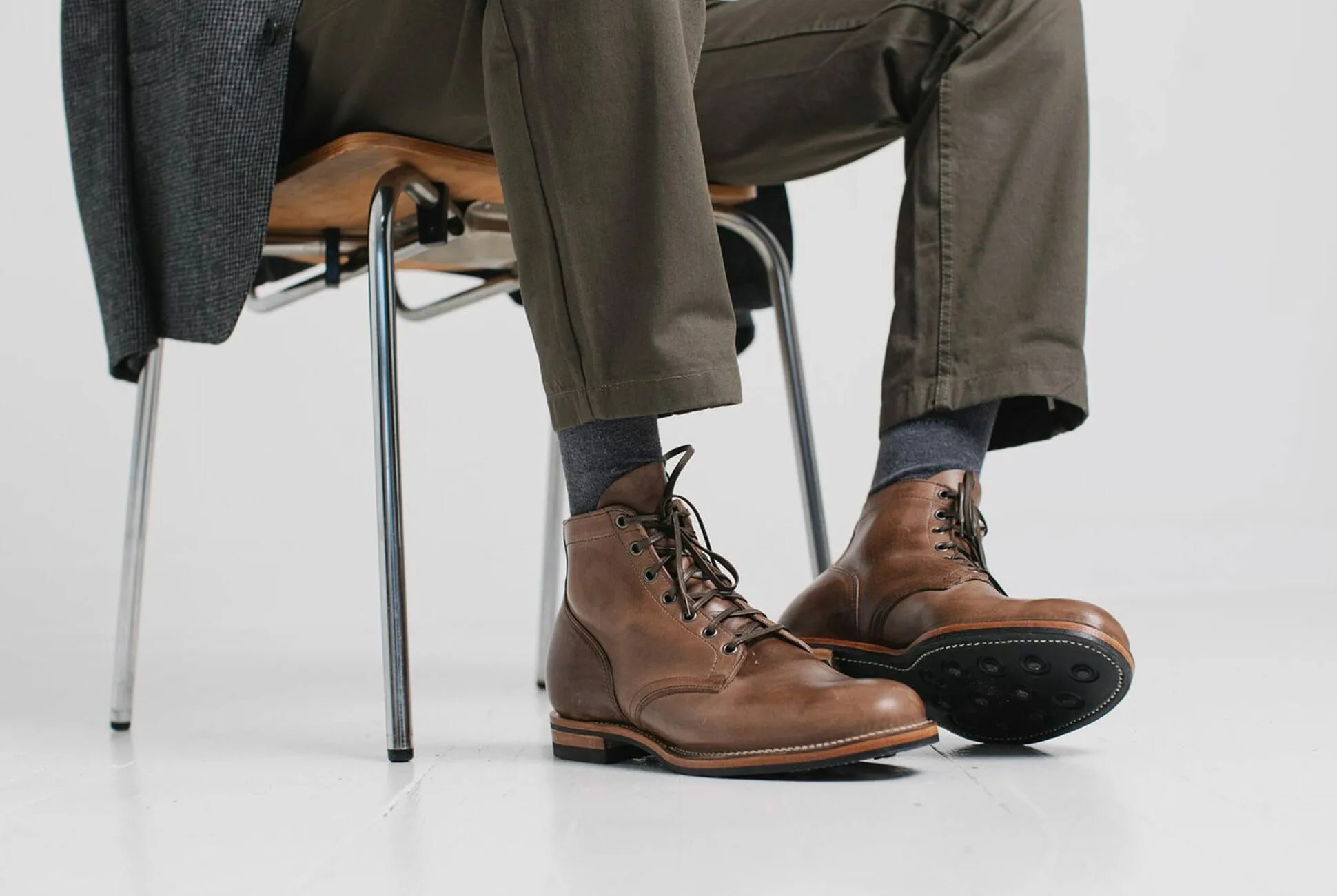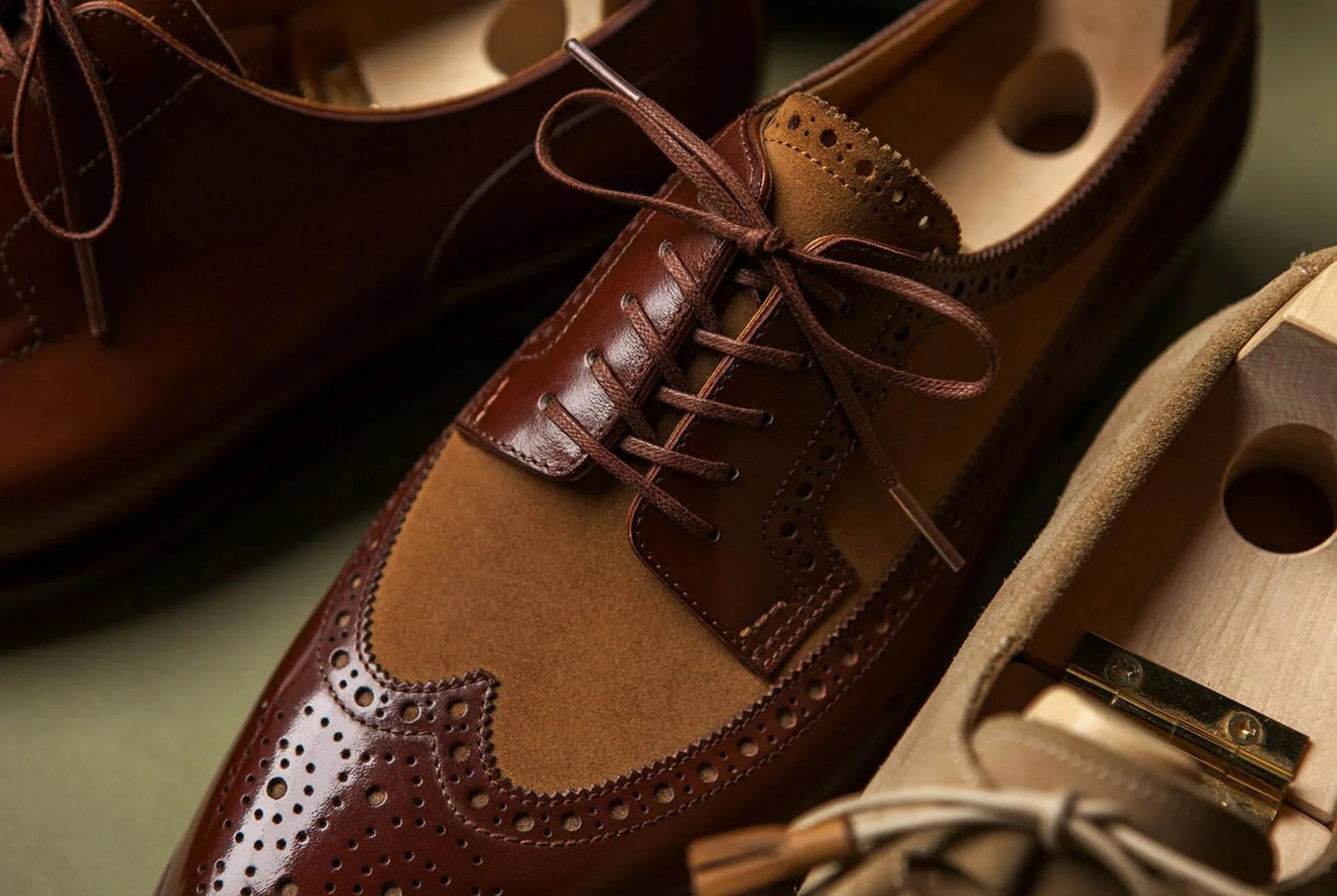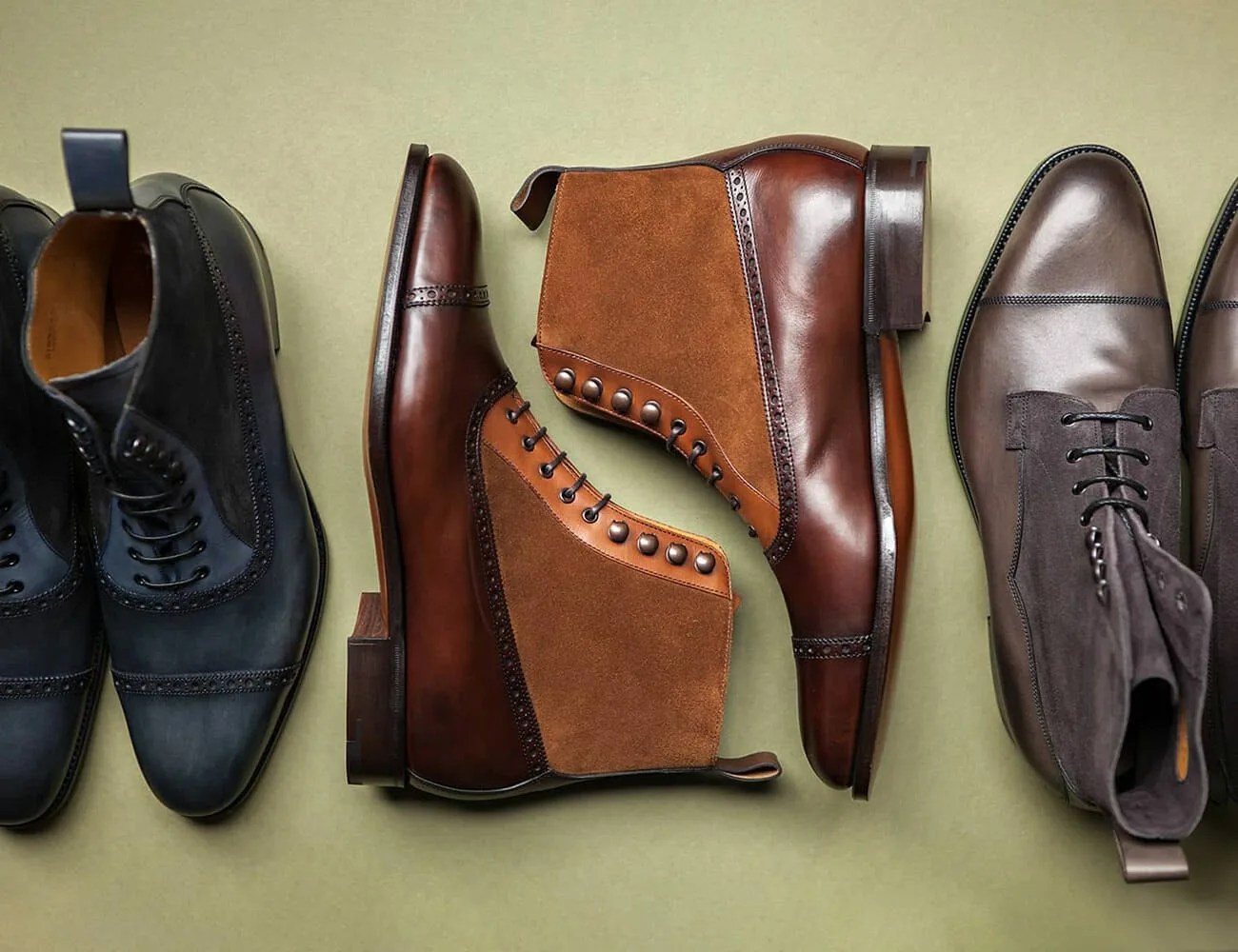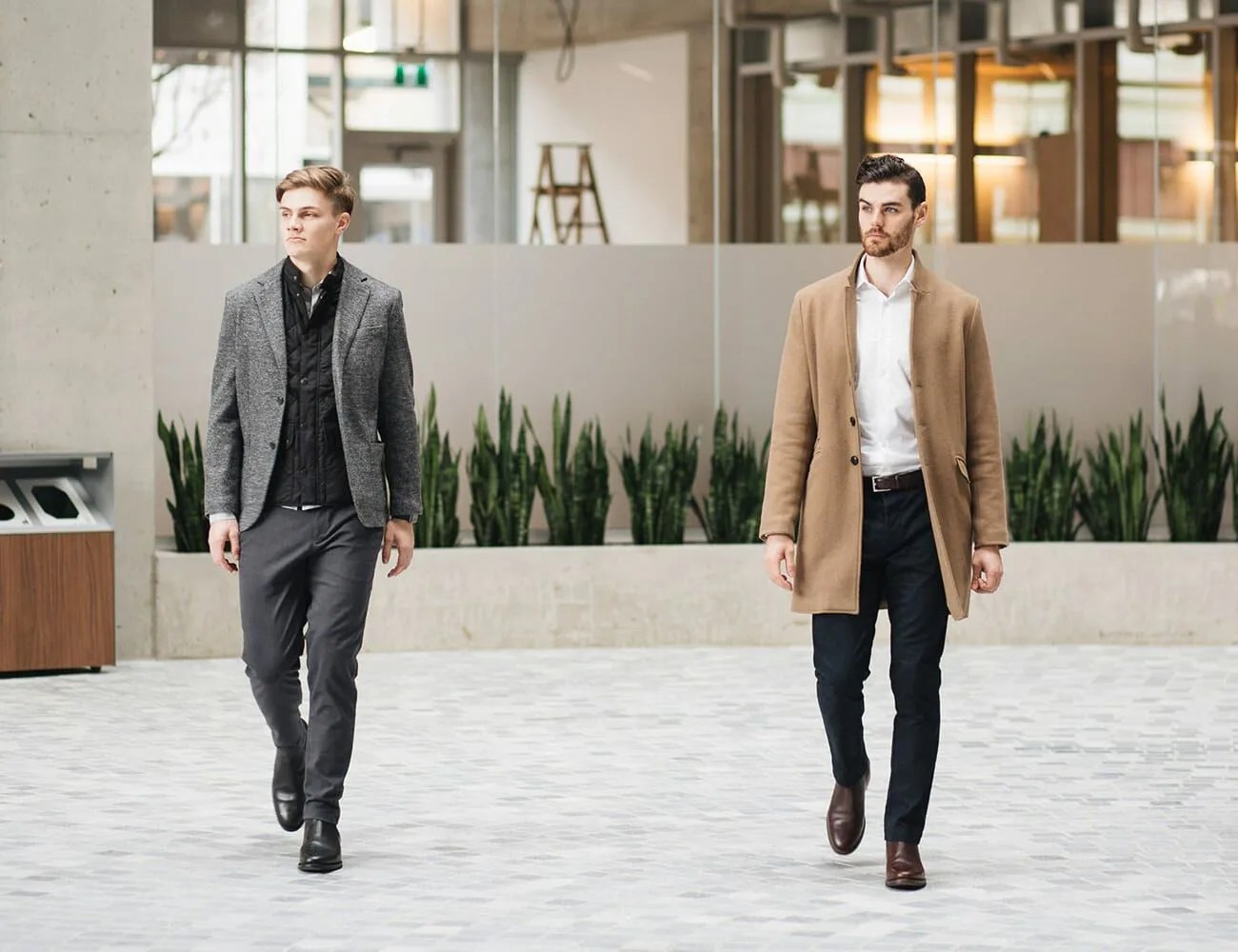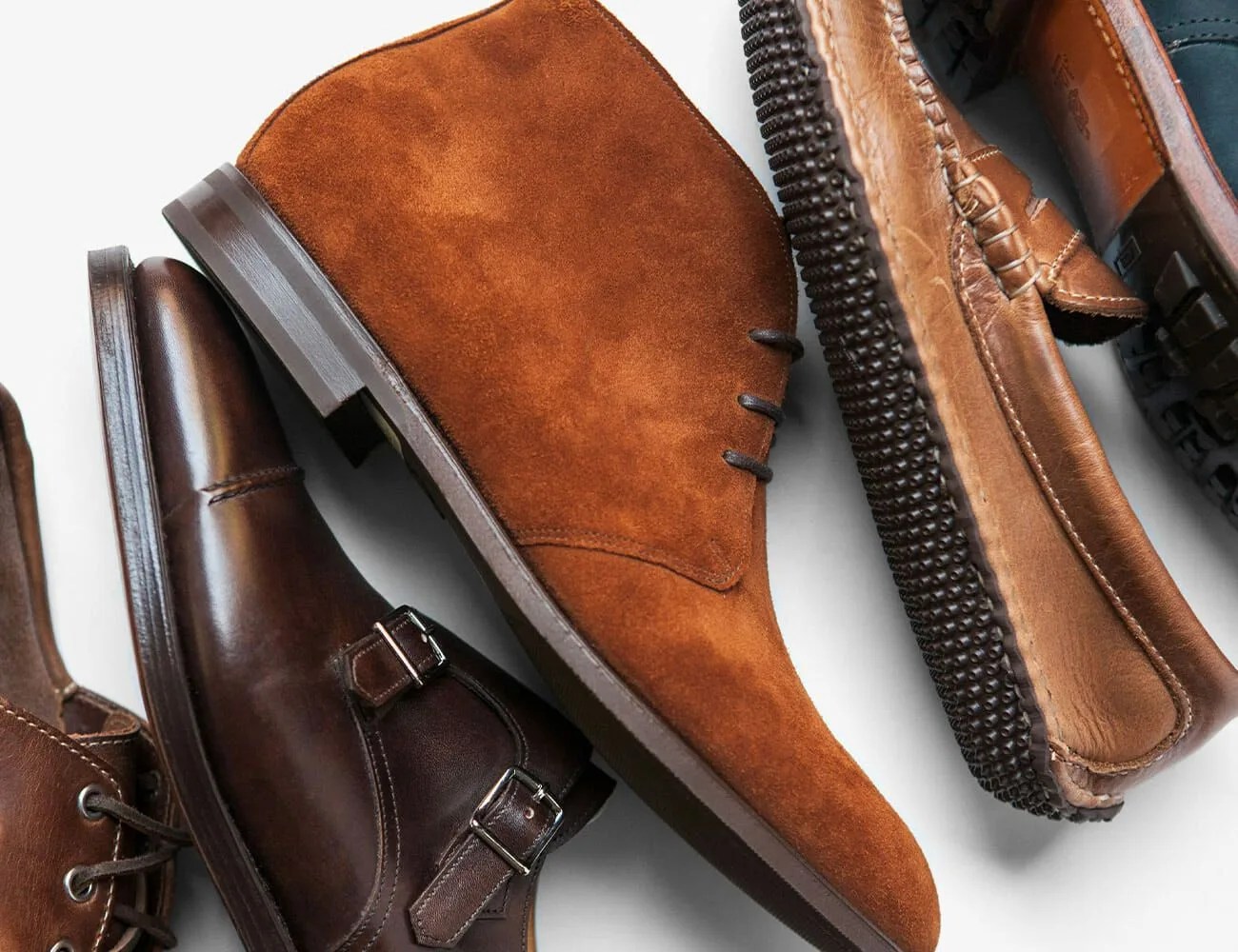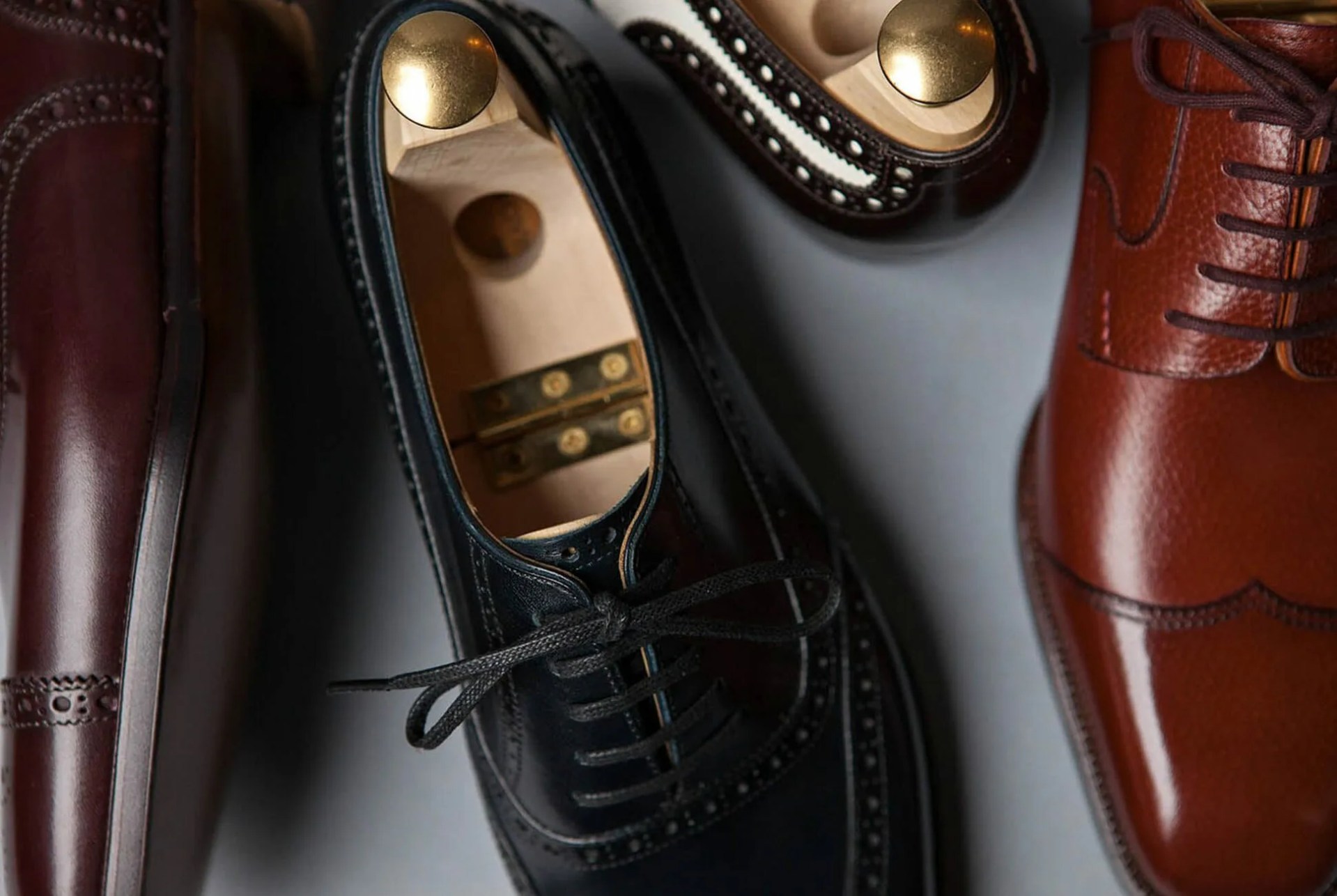Shoe sizing is confusing. You’re a size 10 in one shoe, a 10.5 in another and, somehow, a 9 in another shoe. How? Getting the right size is a balancing act of a dozen pedial factors, each one of which is simultaneously hyper-specific and frustratingly vague. With expert advice from the professionals at high-end retailer Leffot, boot maker Viberg and sneaker mecca Stadium Goods, we gathered the best advice to guide you to the right shoe size.
Preliminary Steps
Remember, No Shoe is Made For You (None!)
Unless you’re shelling out stacks of bills on a pair of bespoke shoes, no store-bought shoe was made to fit your particular foot to its exact specifications. Shoes are shaped around a last, a sculpture that represents the shape of a foot. While bespoke shoes are made using a last that’s made specifically for the commissioning customer, ready-to-wear shoes are made on generic lasts that are shaped to fit a wide swath of people. This means that no pair of shoes will fit your feet perfectly.
However, you can get close enough. With that said, it’s paramount to know which factors are more important to get right and which factors are secondary.
Survey the Shoes You Already Own
Before you even get consider a new pair of shoes, take a look at your current rotation. Perhaps the best piece of advice on shoe sizing is to reference the shoes you already own and take note of the sizes you wear in each style and each brand. Coming to the store equipped with this information is helpful for the salesperson guiding you toward the correct size for the style you’re considering.
Guy Ferguson, the brand director of Viberg, puts it succinctly, “If we reference these more universal standards with brands that are more widely recognized and worn, then we’re already accounting for a customer’s preference for how they like their shoes to fit.”
